How to Showcase your Paintings Online
In today's digital age, showcasing your paintings online is not just an option; it's a necessity. With countless artists vying for attention, standing out in the vast sea of creativity can feel overwhelming. But fear not! This article explores effective strategies for artists to present their work online, focusing on various platforms, marketing techniques, and tips for engaging with potential buyers and art enthusiasts. Whether you're a seasoned artist or just starting, there are innovative ways to display your art and connect with an audience that appreciates your talent.
Selecting the best online platform is crucial for showcasing your paintings. With so many options available, it can be challenging to determine where to focus your efforts. Popular websites like Behance, ArtStation, and Saatchi Art offer unique features tailored to artists. For instance:
- Behance: Ideal for creative professionals, it allows you to create a visually stunning portfolio.
- ArtStation: Great for concept artists and illustrators, it has a built-in community that appreciates digital art.
- Saatchi Art: A marketplace that connects artists with buyers, making it easy to sell your work directly.
Social media platforms like Instagram, Facebook, and Pinterest also play a significant role in showcasing your art. Each platform has its unique audience and style, so choosing the right one can make all the difference in how your work is received.
Once you've chosen your platform, the next step is creating an engaging portfolio. This is your chance to shine and attract viewers and potential buyers. Start by curating your collection—select pieces that represent your style and creativity. Consider writing compelling descriptions that not only explain the artwork but also share your inspiration and the story behind each piece. Remember, a well-told story can resonate deeply with your audience, making them more likely to engage with your work.
The quality of your images can significantly impact your online presence. High-resolution photos are essential for making your paintings look professional and true to life. To achieve this, consider the following best practices:
- Use a good camera or smartphone with a high-quality lens.
- Ensure your artwork is clean and free from dust or glare.
- Take multiple shots from different angles to find the best representation.
Proper lighting is essential for capturing the true colors of your artwork. Natural light is often the best option, so consider taking photos near a window during the day. If you're shooting indoors, use soft, diffused lighting to avoid harsh shadows. Experiment with different lighting setups to find what showcases your paintings most effectively.
Editing can help refine your images for online display. Basic editing tools like Adobe Lightroom or even free options like GIMP can enhance your photos. Focus on improving clarity, color accuracy, and overall presentation. A little editing can go a long way in making your artwork look its best!
Effective descriptions can engage viewers and convey the story behind your paintings. When writing, think about what makes your work unique. Ask yourself questions like: What was your inspiration? What emotions do you want to evoke? Craft narratives that resonate with potential buyers, and don’t shy away from sharing personal anecdotes or experiences that shaped your art.
Social media is a powerful tool for artists to reach a broader audience. Platforms like Instagram and Facebook are particularly effective for visual storytelling. Share behind-the-scenes content, process videos, and even live painting sessions to engage your followers. The more authentic and relatable you are, the more likely people will connect with your art.
Growing a dedicated following is essential for successful online showcasing. Post regularly and interact with your audience through comments and messages. Ask for feedback, run polls, or even host giveaways to keep your followers engaged. Building a community around your art can lead to loyal supporters who will share your work with others.
Partnering with influencers can amplify your reach. Identify relevant influencers in the art community who align with your style and values. Approach them for collaborations that benefit both parties, whether it’s a feature on their platform or a joint project. This can introduce your work to a whole new audience and create exciting opportunities for growth.
Effective marketing strategies are vital for promoting your paintings online. Consider using email marketing to keep your followers updated on new works, exhibitions, or special offers. Online advertising, such as Facebook Ads or Instagram promotions, can also increase visibility and drive traffic to your portfolio or online store.
Creating an online store can streamline the selling process. Platforms like Shopify or Etsy allow artists to sell their work directly to buyers. Make sure your store is user-friendly, with clear images and descriptions. A smooth shopping experience can significantly enhance your sales potential.
Networking can open doors to new opportunities. Connecting with fellow artists, participating in online communities, and collaborating on projects can enhance your visibility. Attend virtual art shows or join forums where you can share your work and gain valuable feedback. Remember, the art world thrives on connections!
Q: How can I improve my online presence as an artist?
A: Focus on creating high-quality images of your work, engaging descriptions, and an active social media presence. Consistency is key!
Q: What platforms are best for selling art online?
A: Platforms like Etsy, Shopify, and Saatchi Art are popular for selling artwork directly to buyers. Choose one that fits your style and goals.
Q: How often should I post on social media?
A: Aim for at least 2-3 times a week to keep your audience engaged without overwhelming them.
Q: Is it essential to have an online store?
A: While it’s not mandatory, having an online store can streamline the selling process and make it easier for buyers to purchase your work.
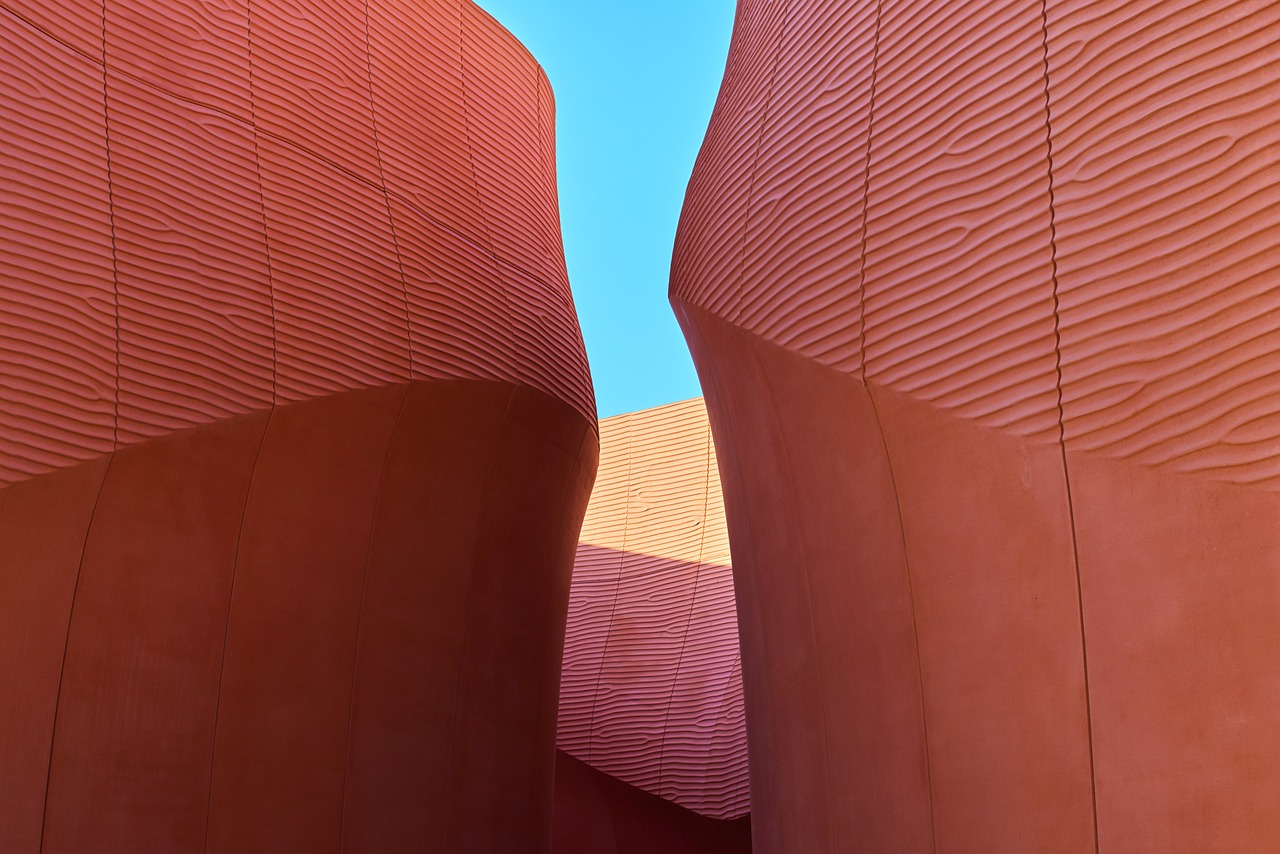
Choosing the Right Platform
When it comes to showcasing your paintings online, the platform you choose can make all the difference. Think of it as picking the right gallery for your art; the right environment not only highlights your work but also attracts the right audience. With numerous options available, it's essential to understand the unique features of each platform to find the best fit for your artistic vision.
First up, let’s talk about dedicated art websites. Platforms like ArtStation and DeviantArt are designed specifically for artists. They allow you to create a visually appealing portfolio that showcases your paintings in high resolution. These sites often have built-in communities where you can interact with fellow artists and art enthusiasts, providing a great opportunity for feedback and inspiration.
On the other hand, social media platforms like Instagram and Facebook offer a different kind of exposure. With billions of users, these platforms can help you reach a wider audience. Instagram, in particular, is visual-centric, making it an ideal space for artists to share their work through posts, stories, and reels. You can also engage directly with your followers, creating a community around your art. However, keep in mind that the fast-paced nature of social media means you need to post regularly and interact with your audience to keep their interest alive.
Another option is e-commerce platforms like Etsy or Shopify. These sites allow you to set up an online store to sell your paintings directly to buyers. They provide tools for managing transactions and shipping, making it easier to run your art business. However, it’s crucial to drive traffic to your store through marketing efforts, as these platforms can be crowded with other sellers.
To help you decide which platform suits your needs best, here’s a quick comparison:
| Platform | Best For | Key Features |
|---|---|---|
| ArtStation | Professional portfolio | High-res images, community feedback |
| Wider audience reach | Visual storytelling, engagement | |
| Etsy | Direct sales | E-commerce tools, transaction management |
Ultimately, the best platform for you depends on your goals as an artist. Do you want to build a community, sell your work, or simply showcase your portfolio? Take the time to explore each option, and don’t hesitate to experiment with multiple platforms to see what resonates with you and your audience. Remember, the right platform can elevate your art and help you connect with those who appreciate it the most.

Creating an Engaging Portfolio
When it comes to showcasing your paintings online, having an engaging portfolio is absolutely essential. Think of your portfolio as your personal gallery—it's where you invite potential buyers and art enthusiasts to experience your creative journey. A well-curated collection can not only attract viewers but also convert them into loyal fans and buyers. So, how do you create a portfolio that stands out in the vast sea of online art? Let's dive in!
First and foremost, it’s crucial to curate your collection wisely. Instead of showcasing every single piece you’ve ever created, focus on your best work that truly represents your style and artistic vision. This selective approach helps in creating a cohesive narrative that resonates with your audience. Imagine walking through a gallery where each piece flows into the next, telling a story—that’s the kind of experience you want to replicate online.
Next, you should pay attention to the descriptions that accompany your paintings. A compelling description doesn’t just explain what the artwork is about; it tells a story. It invites the viewer into your world and helps them connect emotionally with your work. Think about including details such as:
- The inspiration behind the piece
- The techniques used
- Any personal anecdotes related to the creation of the artwork
These elements can transform a simple description into a captivating narrative that draws people in.
Now, let’s talk about the visual presentation of your portfolio. The way you display your artwork can significantly impact how it’s perceived. Make sure your paintings are presented in a visually appealing manner. This can be achieved through:
- Using a clean, minimalist layout that allows your art to shine
- Grouping similar works together to create thematic sections
- Incorporating high-quality images that capture the details and colors of your paintings
Remember, the first impression is often the last impression, so make it count!
Speaking of images, let’s emphasize the importance of high-quality photographs. Poorly lit or blurry images can do a disservice to even the most stunning artwork. Invest some time in learning how to photograph your paintings effectively. A well-taken photo can elevate your portfolio and make your artwork look more professional. So, what are the best practices for capturing your paintings? Here are a few tips:
Proper lighting is essential for showcasing the true colors and details of your artwork. Natural light is often the best option, as it provides a soft, even illumination that highlights your painting without harsh shadows. If shooting indoors, try placing your artwork near a window during the day. Alternatively, consider using softbox lights to mimic natural light, ensuring that your colors come through accurately.
Once you’ve captured your images, don’t forget to edit them! Basic editing tools can help refine your photos, making them clearer and more vibrant. Adjusting brightness, contrast, and saturation can significantly enhance the overall presentation of your artwork. There are various user-friendly editing software options available, so you don’t need to be a tech wizard to make your images pop!
In conclusion, creating an engaging portfolio is all about curation, storytelling, and presentation. By selecting your best work, writing captivating descriptions, and using high-quality images, you can create a portfolio that not only showcases your talent but also connects with your audience on a deeper level. Remember, your portfolio is a reflection of you as an artist, so make it shine!
Q: How many paintings should I include in my portfolio?
A: It’s best to include around 10-20 of your strongest pieces. Quality over quantity is key!
Q: Should I update my portfolio regularly?
A: Yes! Regularly updating your portfolio with new works keeps it fresh and shows that you are actively creating.
Q: Can I include sold artworks in my portfolio?
A: Absolutely! Including sold pieces can demonstrate your past success and popularity.
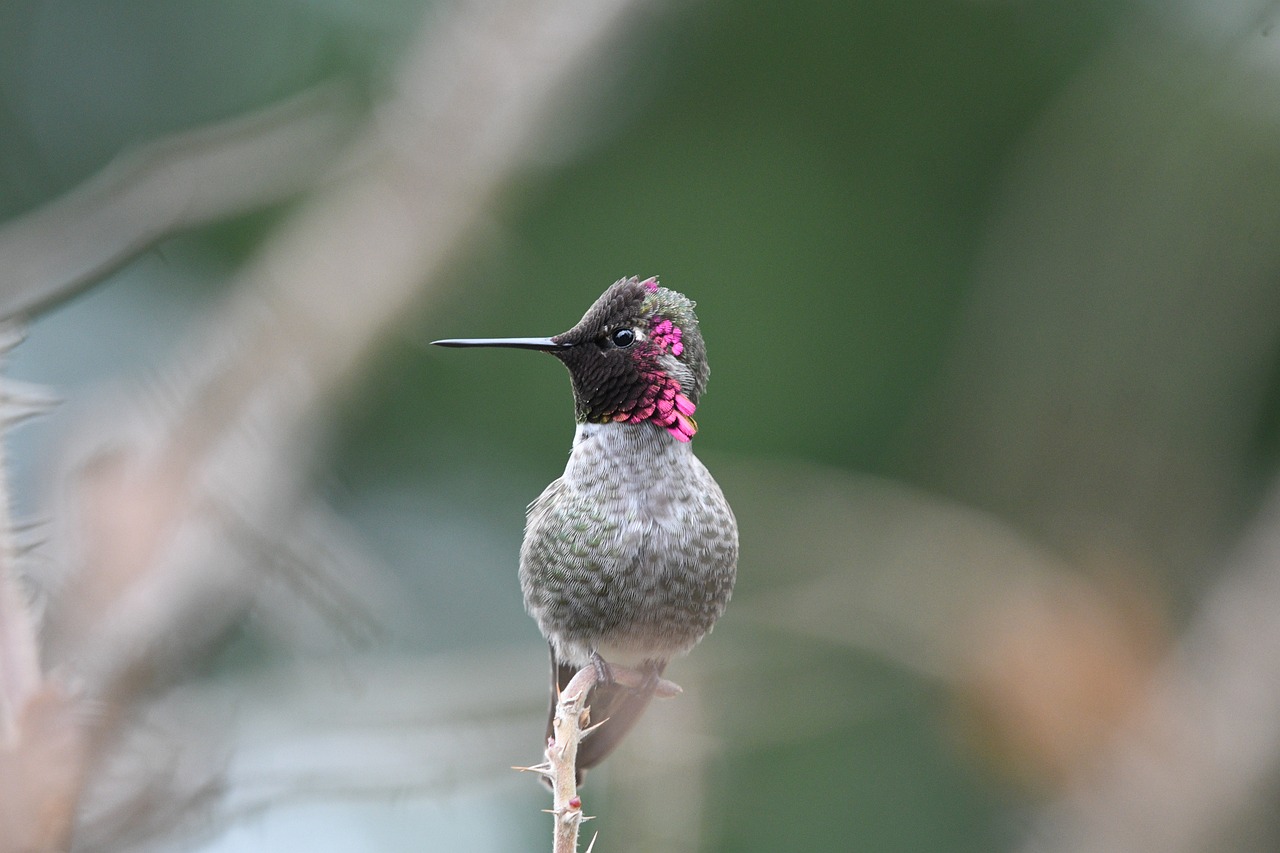
High-Quality Images
When it comes to showcasing your paintings online, the quality of your images is paramount. Think of your artwork as a beautiful gem; if it’s not presented well, it might go unnoticed. High-quality images can elevate your work, making it more appealing to potential buyers and art enthusiasts. So, how do you ensure your paintings shine online?
First and foremost, investing in a good camera can make a significant difference. You don’t need the latest model, but a camera that can capture high-resolution images is essential. If you’re using a smartphone, make sure it has a decent camera with good clarity. However, remember that taking the photo is just the beginning; the way you capture the image is equally important.
Lighting plays a crucial role in photography. Natural light is your best friend when photographing paintings. Aim to shoot during the day when the light is soft and diffused. Avoid harsh sunlight, which can create unwanted shadows and distort colors. Instead, consider positioning your artwork near a window or outside on a cloudy day. You might be surprised at how much the right lighting can enhance the vibrancy of your colors.
Another tip is to use a tripod. This handy tool can help you keep the camera steady, ensuring that your images are sharp and free from blurriness. If you don’t have a tripod, try resting your camera on a stable surface. Remember, a clear image is worth a thousand words!
After capturing your images, it’s time to refine them. Basic editing can go a long way in improving your photos. Use editing software or apps to adjust brightness, contrast, and saturation. This can help your artwork look more true to life. Just be careful not to over-edit; you want your paintings to look like themselves, not a digital version of them.
Here’s a quick checklist to keep in mind for high-quality images:
- Use a good camera or smartphone with high resolution.
- Photograph in natural light.
- Use a tripod or stable surface to avoid blur.
- Edit photos for brightness, contrast, and color accuracy.
In conclusion, high-quality images are crucial for showcasing your paintings online. They serve as the first impression for potential buyers, so make sure that impression is a great one. Remember, your artwork deserves to be seen in the best light—literally and figuratively!
Q: What is the best way to photograph my paintings?
A: The best way is to use natural light and a stable camera setup, like a tripod. Make sure to avoid harsh shadows and reflections.
Q: Do I need expensive equipment to take good photos?
A: Not necessarily! A decent smartphone camera can work well if used correctly. Focus on lighting and composition for the best results.
Q: How much editing should I do on my photos?
A: Aim for subtle adjustments that enhance the image without altering the true colors or details of your artwork.
Q: Can I use filters on my images?
A: While filters can be fun, it’s best to keep them minimal. You want your paintings to be represented as accurately as possible.
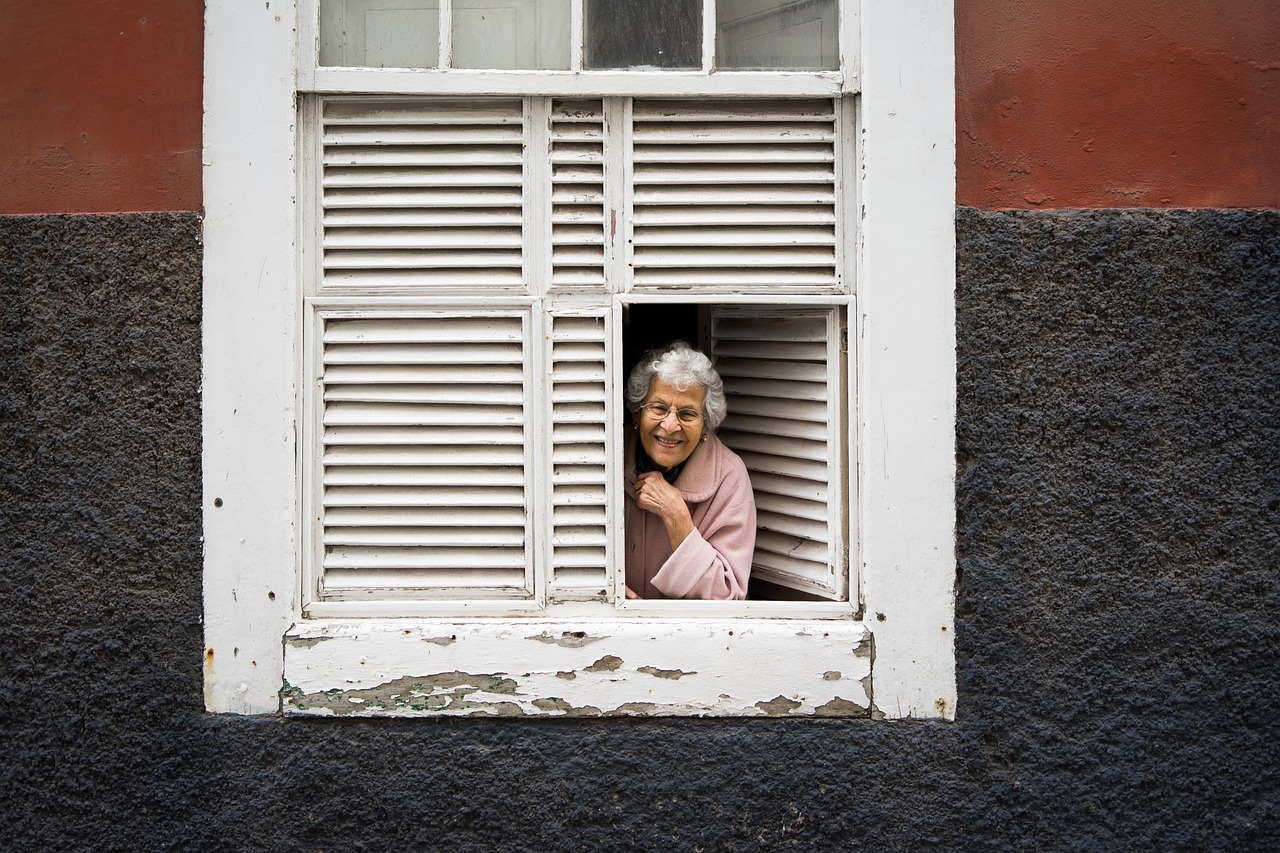
Lighting Techniques
When it comes to showcasing your paintings online, lighting plays a pivotal role in how your artwork is perceived. Think of it as the stage on which your art performs; the right lighting can make your paintings shine, while poor lighting can cast them into shadow, literally and figuratively. So, how do you ensure your paintings are illuminated in the best possible way? Here are some techniques to consider:
First and foremost, natural light is often your best friend. If you can, try to photograph your paintings during the day when you have access to ample sunlight. Position your artwork near a window to take advantage of the soft, diffused light that comes through. This type of lighting helps to reveal the true colors and intricate details of your work, making it look more vibrant and appealing. However, be mindful of the time of day; the golden hour—shortly after sunrise or before sunset—can provide a warm glow that adds depth and richness to your images.
But what if natural light isn't an option? Don't worry! You can create your own lighting setup at home. Here are a few tips on how to achieve this:
- Use Softbox Lights: These are fantastic for creating even, diffused lighting that minimizes harsh shadows. Position them at a 45-degree angle to your painting to achieve the best effect.
- Consider LED Lights: LEDs are energy-efficient and come in various color temperatures. Aim for a temperature around 5000K to 6500K, which mimics natural daylight.
- Avoid Direct Flash: Flash can create glare and wash out colors. Instead, use indirect lighting by bouncing the light off walls or ceilings.
Another critical aspect of lighting is the angle. Experiment with different angles to see how they affect the appearance of your artwork. For instance, lighting from above can create shadows that add dimension, while side lighting can enhance textures and details. Don't hesitate to move around your painting and take test shots from various positions; sometimes, the most unexpected angle can yield the most stunning results.
Lastly, consider the background where you’ll be photographing your paintings. A neutral background can help your artwork stand out, while a cluttered or overly bright background can distract from the piece itself. You want your art to be the star of the show!
In conclusion, mastering lighting techniques can significantly elevate the quality of your online presentation. Whether you opt for natural light or create your own setup, the goal is to ensure that your paintings are displayed in the best possible light—literally! A little experimentation can go a long way in capturing the essence of your artwork and enticing potential buyers.
Q: What is the best time of day to photograph my paintings?
A: Early morning or late afternoon, during the golden hour, is ideal for capturing the best natural light.
Q: Can I use a smartphone to photograph my artwork?
A: Absolutely! Many smartphones have excellent cameras, but ensure you use good lighting and avoid flash for the best results.
Q: How can I avoid glare when photographing glossy paintings?
A: Position your lights at an angle and use a polarizing filter if necessary to reduce glare.

Editing Your Photos
When it comes to showcasing your paintings online, the importance of cannot be overstated. High-quality images are the first impression potential buyers will have of your artwork, and you want that impression to be nothing short of spectacular. Think of your photos as the digital storefront of your art; if the display is cluttered or poorly lit, customers might just walk on by. So, how do you ensure your images stand out? Let’s dive into some essential editing techniques that can elevate your artwork to new heights.
First and foremost, you’ll want to use a reliable photo editing software. Programs like Adobe Photoshop and Lightroom are industry standards, but there are also user-friendly options like Canva and GIMP that are great for beginners. Regardless of the tool you choose, the key is to familiarize yourself with its features. Basic editing tasks such as cropping, adjusting brightness and contrast, and correcting colors can make a world of difference in how your artwork is perceived.
Consider the following steps to enhance your images:
- Crop Wisely: Remove any unnecessary background distractions. Focus on your painting by cropping tightly around the edges.
- Adjust Brightness and Contrast: These adjustments can help your colors pop and give your painting a more vibrant look.
- Color Correction: Ensure that the colors in your digital image match the original artwork. Sometimes, camera settings can distort colors, so tweaking them in post-editing is crucial.
- Sharpen Your Image: A little sharpening can enhance details, making your artwork look crisp and professional.
After making these adjustments, it’s wise to save your images in the right format. JPEGs are typically best for online use due to their balance of quality and file size. However, if you're looking to maintain the highest quality, consider saving a copy in PNG format. This is especially useful if you plan to use the images for prints in the future. Remember, the goal is to present your work in the best light possible, so take your time with the editing process.
Lastly, don’t forget to maintain a consistent style across your portfolio. This creates a cohesive look that can enhance your brand identity as an artist. Whether you prefer a bright and airy aesthetic or a darker, moodier vibe, ensure that your editing style reflects your artistic vision. This attention to detail not only enhances your images but also helps in building a recognizable brand.
In conclusion, editing your photos is about more than just making your paintings look good; it's about telling a story and inviting viewers into your creative world. So grab your editing software, roll up your sleeves, and get to work on those images. Your art deserves to shine!
Q: What is the best software for editing photos of my paintings?
A: Some popular options include Adobe Photoshop and Lightroom for advanced editing, while Canva and GIMP are great for beginners looking for user-friendly interfaces.
Q: How can I ensure the colors in my photos match the original artwork?
A: Use color correction tools in your editing software to adjust hues and saturation. Also, consider using a color calibration tool for your monitor to ensure accurate color representation.
Q: Should I edit my photos before or after uploading them online?
A: It's best to edit your photos before uploading them. This ensures that your artwork is presented at its finest right from the start.
Q: What file format should I use for my edited images?
A: JPEG is generally recommended for online use due to its balance of quality and file size, but PNG is better for high-quality prints.

Writing Compelling Descriptions
When it comes to showcasing your paintings online, is just as important as the artwork itself. Think of your description as the storyteller for your painting; it provides context, emotion, and a deeper understanding of what your audience is seeing. A well-crafted description can turn a casual viewer into a passionate buyer. But how do you create that magic? Let's dive into some key elements!
First, consider the emotional connection you want to establish with your audience. What inspired you to create this piece? What feelings does it evoke? Sharing your personal journey can make your art more relatable. For example, if your painting reflects a moment of tranquility during a chaotic time, express that sentiment in your description. This not only adds depth but also invites the viewer to connect with the piece on a personal level.
Next, be descriptive! Use vivid language that paints a picture in the reader's mind. Instead of saying, "This is a blue painting," try something like, "This artwork captures the serene essence of a calm ocean under a twilight sky, with deep azure hues that invite you to dive into tranquility." Such descriptions help the viewer visualize the artwork and feel its essence, making them more likely to engage with it.
Additionally, don't forget to include technical details that may interest potential buyers. This includes the medium used, dimensions, and the techniques employed. For example, you might say, "Created with high-quality acrylics on a 24x36 canvas, this piece showcases a unique layering technique that adds depth and texture." This information not only enhances the credibility of your work but also appeals to art enthusiasts looking for specific qualities in a painting.
Lastly, always end with a call to action. Encourage your audience to take the next step, whether it’s visiting your online store, following you on social media, or simply sharing their thoughts in the comments. A simple line like, "If this piece resonates with you, feel free to reach out or visit my gallery for more!" can create a sense of community and prompt engagement.
Here’s a quick recap of what makes a compelling description:
- Emotional connection: Share your inspiration.
- Descriptive language: Paint a vivid picture with words.
- Technical details: Include medium, dimensions, and techniques.
- Call to action: Encourage engagement and interaction.
By following these guidelines, you can create descriptions that not only inform but also inspire and engage your audience. Remember, your words are a powerful tool in bringing your artwork to life online!
Q: How long should my painting descriptions be?
A: Aim for a length that provides enough detail without overwhelming the reader—typically around 100-200 words is ideal.
Q: Should I include personal anecdotes in every description?
A: While personal stories can enhance a description, it's not necessary for every piece. Use them where they add value and context.
Q: Is it important to use technical jargon in my descriptions?
A: Use technical terms if your audience is familiar with them, but always prioritize clarity and accessibility in your language.
Q: Can I update my descriptions over time?
A: Absolutely! As your style evolves or as you receive feedback, feel free to refine your descriptions to better reflect your work.

Utilizing Social Media
Social media has transformed the way artists connect with audiences and showcase their work. It's not just about posting pretty pictures; it’s about building a community and engaging with art lovers from all over the globe. Think of social media as your digital gallery—an ever-evolving space where you can share not only your paintings but also your creative process, inspirations, and personal stories. So, how can you harness the power of social media to elevate your art career? Let's dive into some effective strategies!
First off, you need to choose the right platforms to showcase your artwork. Each social media channel has its unique audience and style. For instance, Instagram is a visual-centric platform perfect for sharing high-quality images of your paintings, while Facebook allows for longer posts and community building through groups. On the other hand, Pinterest can be a fantastic tool for driving traffic to your website or online store. Understanding the strengths of each platform will help you tailor your content accordingly.
Once you’ve selected your platforms, the next step is to focus on building a following. Growing a dedicated audience takes time, but it’s essential for successful online showcasing. Here are a few tips to consider:
- Post Regularly: Consistency is key. Create a content calendar to plan your posts and keep your audience engaged.
- Engage with Your Audience: Respond to comments, ask questions, and create polls. Interaction fosters a sense of community.
- Use Hashtags Wisely: Research relevant hashtags in the art community to reach a broader audience. Mix popular tags with niche ones for better visibility.
Another powerful strategy is to collaborate with influencers. Partnering with influencers in the art community can significantly amplify your reach. Identify individuals whose style aligns with yours and who have a following that resonates with your target audience. When approaching them, be genuine and express how a collaboration could benefit both parties. Perhaps you could co-host an online event or create a joint art project. The possibilities are endless!
Don't forget to showcase your personality! People love connecting with artists on a personal level. Share behind-the-scenes content, such as your workspace, tools, and even your daily life. This transparency not only humanizes you but also allows potential buyers to feel a deeper connection to your work. Remember, art is not just about the final product; it's about the journey and the stories behind it.
Lastly, consider using social media for marketing your artwork. Run targeted ads to reach specific demographics or art enthusiasts who might be interested in your style. You can also use features like Instagram Stories or Facebook Live to host Q&A sessions, art demonstrations, or virtual gallery tours. These interactive elements can significantly boost engagement and create a buzz around your work.
In summary, utilizing social media effectively can open up a world of opportunities for artists. By choosing the right platforms, building a dedicated following, collaborating with influencers, and sharing your personal journey, you can create a vibrant online presence that not only showcases your paintings but also connects you with art enthusiasts and potential buyers around the world.
- What platforms are best for showcasing art? Instagram, Facebook, and Pinterest are among the top choices for artists due to their visual focus and community engagement.
- How often should I post on social media? Aim for consistency rather than frequency. Posting a few times a week with quality content is more effective than daily posts that lack substance.
- Should I engage with my followers? Absolutely! Engaging with your audience fosters community and encourages loyalty, making them more likely to support your work.
- How can I collaborate with influencers? Start by researching influencers in your niche, then reach out with a genuine proposal on how a collaboration could benefit both parties.
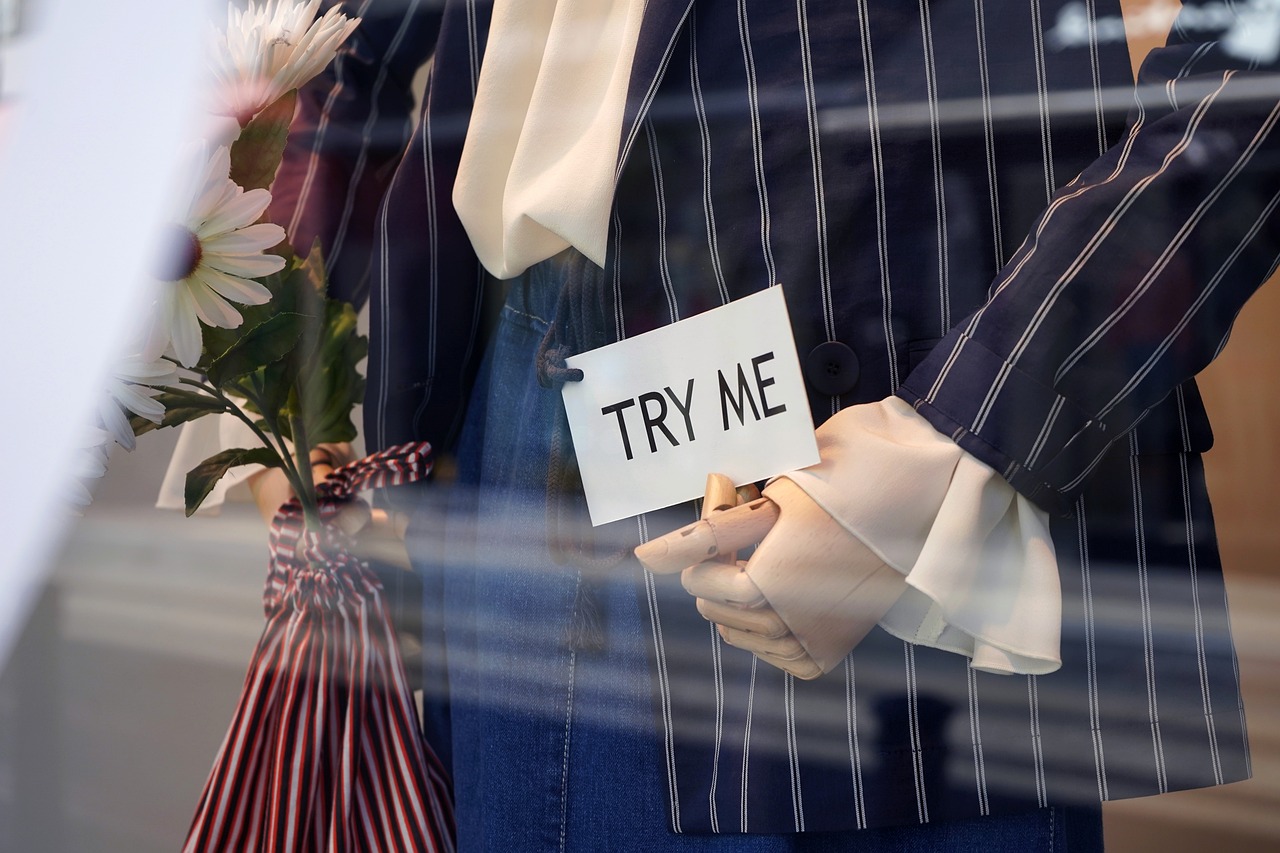
Building a Following
Building a dedicated following is one of the most crucial steps for artists looking to showcase their work online. It’s not just about having a large number of followers; it’s about creating a community that genuinely appreciates your art. Think of your followers as your personal cheerleaders, ready to promote your work and share it with others. But how do you cultivate such a loyal audience? Let’s dive into some effective strategies!
First off, consistency is key. Just like a good book series, your audience will look forward to your next post if they know when to expect it. Aim to post regularly—whether it's once a day, a few times a week, or even weekly—find a rhythm that works for you and stick to it. This not only keeps your current followers engaged but also attracts new ones. Remember, each post is a chance to showcase your latest work, share your creative process, or even discuss your inspirations.
Another essential aspect of building a following is interaction. Social media is called “social” for a reason! Engage with your audience by responding to comments, asking for their opinions, or even hosting Q&A sessions. This two-way communication fosters a sense of community and makes followers feel valued. You might be surprised how a simple reply can turn a casual viewer into a devoted fan.
Moreover, consider collaborating with other artists or influencers in your niche. This is like throwing a mini-party where everyone invites their friends! When you collaborate, you expose your work to a whole new audience who might not have discovered you otherwise. Look for artists with a similar style or a complementary aesthetic, and brainstorm creative projects that can showcase both of your talents.
Lastly, don’t underestimate the power of hashtags and keywords. Using relevant tags can significantly increase your visibility on platforms like Instagram or Twitter. Think about what potential followers might be searching for and include those tags in your posts. This way, your artwork can pop up in feeds that are already interested in art, making it easier for new followers to find you.
In summary, building a following requires a combination of consistency, interaction, collaboration, and smart use of hashtags. It’s like nurturing a plant; with the right care and attention, it will grow beautifully over time. So, get out there, engage with your audience, and watch your community flourish!
- How often should I post on social media? Aim for consistency rather than frequency. Find a schedule that works for you, whether it's daily or a few times a week.
- What platforms should I focus on? Focus on platforms where your target audience hangs out. Instagram and Pinterest are great for visual art, while Facebook can help you build community.
- How can I improve engagement with my followers? Engage with your followers by responding to comments, asking for their opinions, and sharing behind-the-scenes content.

Collaborating with Influencers
In today's digital age, has become a game-changer for artists looking to expand their reach and connect with a wider audience. But what exactly does it mean to collaborate with an influencer? Simply put, it's about partnering with individuals who have a significant following in the art community or related fields. These influencers can help amplify your message and showcase your artwork to their dedicated fans, which can lead to increased visibility and potential sales.
When considering collaboration, it's essential to identify influencers whose style and audience align with your artistic vision. For instance, if your paintings reflect a modern aesthetic, partnering with an influencer known for contemporary art would be advantageous. Not only does this create a natural synergy, but it also ensures that the audience is genuinely interested in what you have to offer. To make this partnership effective, consider the following steps:
- Research: Take time to explore various influencers in your niche. Look at their engagement rates, the type of content they share, and how they interact with their followers.
- Engagement: Before reaching out, engage with their content. Like, comment, and share their posts to establish a connection. This can help you stand out when you finally approach them.
- Proposal: When you're ready to reach out, craft a personalized message. Explain why you admire their work and how a collaboration could benefit both parties. Be clear about your vision and what you can offer in return.
Once you've established a partnership, the possibilities are endless. You could host a joint art show, create a limited edition print, or even collaborate on a unique piece that combines both your styles. Such collaborations not only enrich your portfolio but also provide exciting content for both your and the influencer's audiences. Remember, the goal is to create a win-win situation where both you and the influencer can grow and engage your respective audiences.
Additionally, utilizing platforms like Instagram and TikTok can further enhance your collaboration efforts. Consider hosting live sessions where you can discuss your artwork, share insights into your creative process, and answer questions from viewers. This interactive approach not only builds a stronger connection with the audience but also showcases your personality and passion for art.
In summary, collaborating with influencers can significantly boost your online presence and sales. It's about building relationships and creating opportunities that resonate with both your audience and theirs. So, don't hesitate to reach out, share your creativity, and watch your art journey flourish!
Q1: How do I find the right influencer to collaborate with?
A1: Start by researching influencers in your niche. Look for those who share similar artistic styles or values and have an engaged audience.
Q2: What should I offer an influencer in return for collaboration?
A2: Consider offering them exposure to your audience, a share of sales from collaborative projects, or even a unique piece of artwork.
Q3: How can I measure the success of my collaboration?
A3: Monitor engagement metrics such as likes, comments, shares, and any increase in followers or sales during and after the collaboration.

Marketing Your Artwork
Marketing your artwork is not just about slapping a price tag on your paintings and hoping for the best; it's a strategic process that can elevate your visibility and boost your sales. In today's digital age, the art market is more competitive than ever, and having a solid marketing plan can make all the difference. Think of your art as a beautiful flower in a vast garden—without the right marketing, it might get overshadowed by the weeds. So, how do you ensure your creations bloom?
First and foremost, understanding your target audience is key. Who are the people that resonate with your style? Are they young professionals looking to decorate their homes, or perhaps art collectors seeking unique pieces? Once you identify your audience, you can tailor your marketing efforts to speak directly to them. You can use various techniques to reach out, including:
- Email Marketing: This is a powerful tool that allows you to directly communicate with your audience. Consider creating a newsletter where you share updates about your latest works, upcoming exhibitions, or even behind-the-scenes content that gives your followers a glimpse into your creative process.
- Online Advertising: Platforms like Facebook and Instagram offer targeted advertising options that can help you reach potential buyers who may not be aware of your work.
- Content Marketing: Write blog posts or create videos that discuss your artistic journey, techniques, and inspirations. This not only helps in building a connection with your audience but also boosts your SEO efforts.
Another crucial aspect of marketing your artwork is setting up an online store. With platforms like Etsy, Shopify, or your own website, you can create a user-friendly shopping experience for your customers. Make sure your store is visually appealing and easy to navigate. Include high-quality images and detailed descriptions of your artwork to entice buyers. Think of your online store as your gallery—every detail matters!
Networking with other artists can also enhance your marketing efforts. By collaborating with fellow creatives, you can tap into their audiences and gain exposure. Participate in online art communities, attend workshops, or join local art groups. These connections can lead to joint exhibitions or promotional events that can significantly increase your visibility.
Finally, don’t underestimate the power of social media. Platforms like Instagram and Pinterest are visual-centric, making them perfect for artists. Regularly post your artwork, share stories about your creative process, and engage with your followers. Remember, social media is not just about promotion; it's about building relationships. Respond to comments, share user-generated content, and show appreciation for your audience's support. This engagement can turn casual viewers into loyal fans.
Q: What is the best platform to sell my artwork online?
A: The best platform depends on your target audience and the type of art you create. Etsy is great for handmade items, while Shopify offers a customizable online store experience. Consider your needs and research each platform to find the best fit for you.
Q: How often should I post on social media?
A: Consistency is key! Aim to post at least a few times a week to keep your audience engaged. You can experiment with different posting schedules to see what works best for you and your followers.
Q: How can I improve my email marketing strategy?
A: Start by building a subscriber list and providing valuable content, such as exclusive previews of your work or special discounts. Use engaging subject lines and personalize your emails to make them more appealing.
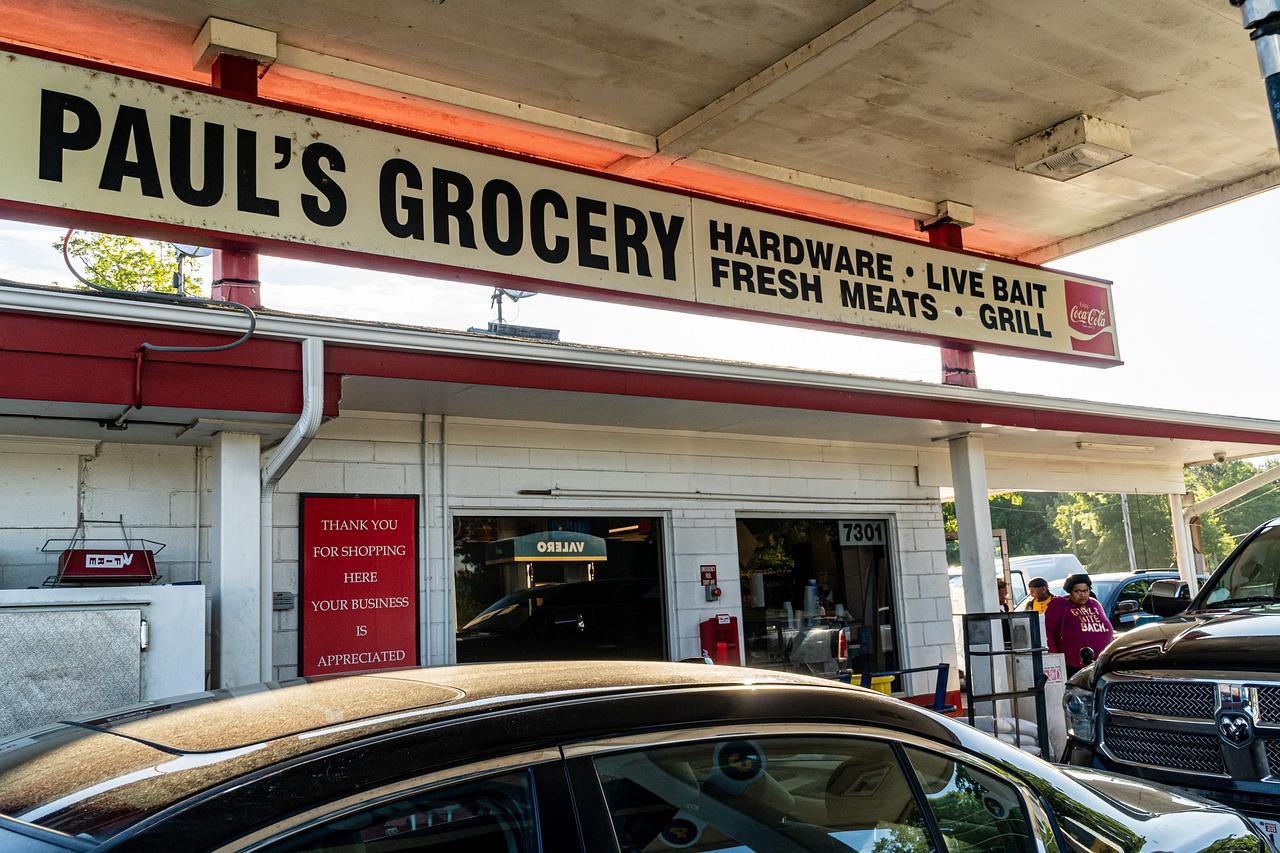
Setting Up an Online Store
Establishing an online store is a game-changer for artists looking to sell their paintings directly to buyers. Not only does it provide a platform for showcasing your work, but it also allows for a more personal connection with your audience. Imagine having a virtual gallery that operates 24/7, where potential buyers can browse through your creations at their leisure! But how do you set this up effectively? Let's break it down.
First and foremost, you'll need to choose a platform that suits your needs. There are several options available, each with its own unique features. For example, platforms like Shopify and Big Cartel are popular among artists for their user-friendly interfaces and customizable templates. On the other hand, if you're looking for something more art-focused, consider Artfinder or Etsy. These platforms cater specifically to artists and craftspeople, making it easier for you to reach the right audience.
Once you've selected a platform, the next step is to create a visually appealing and user-friendly store layout. Your online store should reflect your artistic style and make it easy for visitors to navigate. Use high-quality images of your paintings, as this will create a professional atmosphere and entice potential buyers. Remember, first impressions matter! You want your visitors to feel an emotional connection to your art, so take the time to curate your gallery effectively.
Next, consider the importance of product descriptions. Each painting should have a detailed description that not only explains the inspiration behind the piece but also highlights its dimensions, medium, and any special techniques used. This information can help potential buyers understand the value of your work. For instance, instead of simply stating, "This is an oil painting," you might say, "This vibrant oil painting, inspired by the serenity of nature, captures the essence of a sunset over a tranquil lake, measuring 24x36 inches." This narrative approach can significantly enhance the appeal of your artwork.
Additionally, think about your pricing strategy. Research similar artworks to gauge what price point is appropriate for your pieces. It's essential to strike a balance between making a profit and being competitive. Don't forget to factor in shipping costs, as these can impact a buyer's decision. Offering free shipping on certain orders can be a great incentive!
Finally, once your store is set up, promote it! Utilize social media channels to direct traffic to your online store. Share behind-the-scenes content, art processes, and even customer testimonials to build a community around your work. Engaging with your audience can lead to word-of-mouth referrals and repeat customers.
In conclusion, setting up an online store is an exciting opportunity to showcase your paintings to a global audience. By choosing the right platform, creating an engaging layout, writing compelling descriptions, pricing your work appropriately, and promoting your store effectively, you can turn your passion for art into a thriving business. So, what are you waiting for? Start building your online gallery today!
- What platform is best for selling art online? The best platform depends on your specific needs, but popular options include Shopify, Etsy, and Artfinder.
- How do I price my artwork? Research similar artworks to find a competitive price point, and consider factors like size, medium, and your experience.
- Should I offer free shipping? Offering free shipping can attract more buyers, but be sure to factor it into your pricing strategy.
- How can I promote my online store? Use social media, engage with your audience, and share behind-the-scenes content to drive traffic to your store.

Networking with Other Artists
Networking with other artists is not just about exchanging business cards or following each other on social media; it's about building genuine relationships that can lead to exciting collaborations and opportunities. Imagine being part of a vibrant community where creativity flows freely, and support is always just a message away. By connecting with fellow artists, you can share experiences, gain valuable insights, and even find inspiration for your next masterpiece.
One of the best ways to network is by participating in online art communities and forums. These platforms allow you to engage with artists from all over the world. You can share your work, receive feedback, and discover new techniques. It's like being part of a global art studio, where everyone contributes their unique perspective. Some popular platforms include:
- Facebook Groups: Join art-related groups where you can post your work and interact with other artists.
- Instagram: Use hashtags to connect with fellow artists and engage with their content.
- ArtStation: A dedicated platform for artists to showcase their portfolios and connect with each other.
Moreover, attending virtual art exhibitions and webinars can also enhance your networking efforts. These events often feature discussions with established artists, offering insights into their creative processes and marketing strategies. Engaging in Q&A sessions can help you connect directly with industry leaders and other aspiring artists. It’s like having a backstage pass to the art world!
Another effective method is collaborating on projects. Whether it's a joint exhibition, a community art piece, or even an online challenge, working together can strengthen your ties and expand your audience. Think of it as creating a beautiful tapestry; each artist contributes their unique thread, resulting in a masterpiece that showcases everyone's talent.
Don't forget about the power of local art events! Participating in gallery openings, art fairs, or workshops can provide face-to-face networking opportunities. You can meet other artists, curators, and potential buyers in a more personal setting. Building these connections can lead to referrals and collaborations that might not happen online.
In summary, networking with other artists is about creating a supportive ecosystem that fosters growth and creativity. By engaging with your peers, participating in online communities, collaborating on projects, and attending events, you can significantly enhance your visibility and open doors to new opportunities. Remember, in the world of art, collaboration can be just as powerful as competition.
- How can I find local artists to network with? Check local art galleries, community centers, and social media platforms for events and groups that cater to artists in your area.
- What are some online platforms for artist networking? Consider joining platforms like DeviantArt, ArtStation, or Facebook groups dedicated to artists.
- How do I approach another artist for collaboration? Start by engaging with their work online, then send a friendly message expressing your admiration and suggesting a collaborative project.
- Is networking important for selling my artwork? Absolutely! Networking can lead to referrals, collaborations, and visibility, all of which can help you sell more artwork.
Frequently Asked Questions
- What is the best platform to showcase my paintings online?
Choosing the right platform depends on your goals and target audience. Popular options include websites like ArtStation, Saatchi Art, and social media platforms like Instagram and Facebook. Each has its unique features that cater to different types of artists and audiences, so consider what aligns best with your artistic style and marketing strategy.
- How can I create an engaging portfolio?
An engaging portfolio should showcase your best work and tell a story. Curate a collection that reflects your artistic journey, and write compelling descriptions that connect with viewers. Use high-quality images and ensure your layout is visually appealing to keep potential buyers interested.
- What are some tips for taking high-quality photos of my paintings?
Lighting is key! Use natural light whenever possible, and avoid harsh shadows. Experiment with different angles and backgrounds to find what best highlights your artwork. Editing your photos afterward can also enhance clarity and color accuracy, making your paintings pop online.
- How do I write effective descriptions for my artwork?
Effective descriptions should be engaging and personal. Share the inspiration behind your work, the techniques you used, and what you hope viewers will feel. Aim to create a connection with your audience by telling a story that resonates with them, making your art more memorable.
- What social media strategies can help me promote my art?
Consistency is crucial! Post regularly and engage with your followers through comments and messages. Use relevant hashtags to reach a wider audience and collaborate with influencers in the art community to amplify your visibility. Don't forget to share behind-the-scenes content to foster a personal connection with your audience!
- How can I set up an online store for my artwork?
Platforms like Etsy, Shopify, and Big Cartel make it easy to set up an online store. Choose a platform that suits your needs, and focus on creating a user-friendly experience. Make sure to provide clear images, detailed descriptions, and straightforward purchasing options to encourage sales.
- Why is networking with other artists important?
Networking opens doors to collaboration, exposure, and new opportunities. Engaging with fellow artists can lead to partnerships, joint exhibitions, or shared promotions that enhance your visibility. Participating in online communities can also provide support and inspiration, making your artistic journey more fulfilling.



















